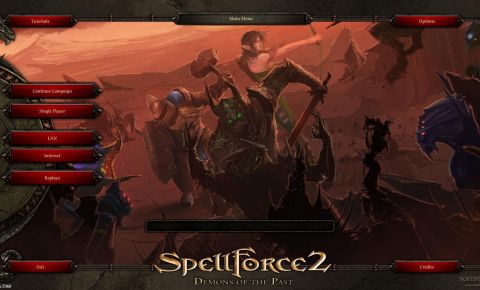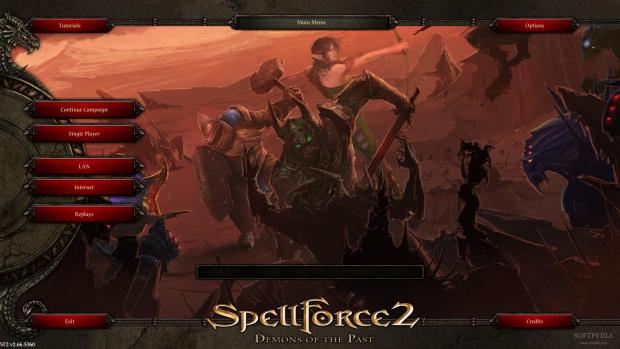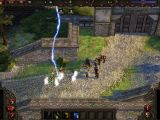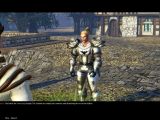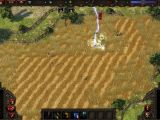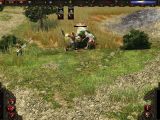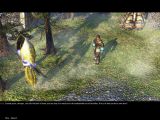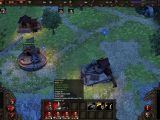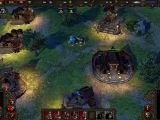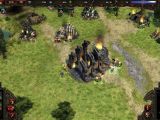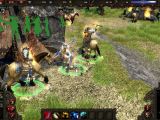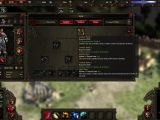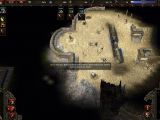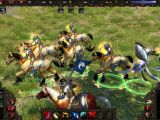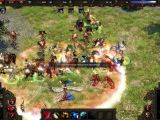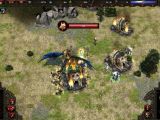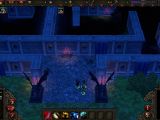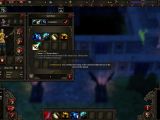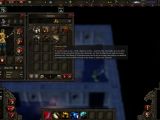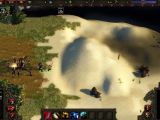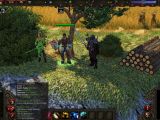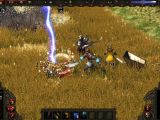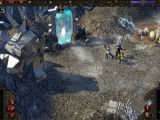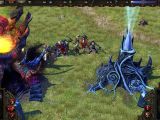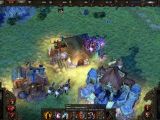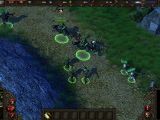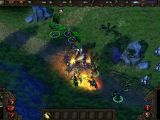SpellForce 2: Demons of the Past is the third and final standalone expansion to SpellForce 2, aiming to conclude the plot of the SpellForce 2 series, resolving all of the unfinished pieces of the story exposed so far.
SpellForce mixes together real time strategy with role-playing elements, offering a multitude of playing options to its users. Its first iteration, back in 2003, was received with quite a bit of excitement, generally receiving praise for its interesting blend of gameplay mechanics.
SpellForce 2:Demons of the Past has been created by Hungarian developer Mind Over Matter, under the careful scrutiny of Nordic Games, who also published Faith in Destiny, the second SpellForce 2 expansion.
Introduction
The concluding standalone add-on picks things up where SpellForce 2: Faith in Destiny left off, and once again has players creating an avatar and fighting off The Nameless Evil and its endless armies, with the usual cameos from dragons and ethereal forces beyond comprehension.
Demons of the Past offers many options, from a single-player story mode campaign that evolves and finally completes the whole saga, with scripted cutscenes that progress the storyline, to a sort of free playing storiless campaign, where players can save their character between maps.
Real Time Strategy – MultiplayerThe game can also be played like a real-time strategy title, offering many maps for skirmishes, both versus the AI and other players, over LAN or online. Players can choose from five factions, including The Nameless, all of which differ in a small way from the others, in order to keep things fresh, but play about the same.
There are three resources to collect, stone primarily utilized for building structures and upgrading them, and silver and lenya for training units and upgrading them. Lenya is also used to recruit faction heroes, which bring an extensive arsenal of powerful spells to the battlefield and are a force to be reckoned with.
There are also defensive structures and population caps, and workers become increasingly more expensive as their numbers grow, in an attempt to introduce an extra layer of depth.
The units themselves can also benefit from upgrades, and many of them even require a prerequisite technology upgrade in order to be built, so there are plenty of opportunities to make strategic decisions.
Army composition does play some role in the outcome of battles, a good mix of melee/ranged/healing units being considerably more effective than an angry mob. But on the other hand, unit micromanagement is not an overall very important factor.
It would have been nice to have more control over units, as sometimes it feels like the player does not have much effect over battles, once the troops start swinging. However, rewarding plays can still be made, such as hit-and-run tactics in the worker line, using the nimble Shaikan cavalry.
In the end, SpellForce 2: Demons of the Past also has a life outside its single-player campaign, and while not being on par with dedicated highly competitive real-time strategy titles, it does offer an enjoyable, albeit less cutthroat experience.
Role Playing Game - Single Player
The single-player campaign mixes role-playing and strategy, some missions using only the plot characters and playing similar to party-based RPGs, and others relying heavily on resource gathering and the amassing of troops.
Aside from the player avatar, there are other crucial people in SpellForce 2: Demons of the Past, and players have to take care not to lose them. Upon death, they can be revived (for a cost) at a special buildings, but there will only be a limited amount of time to do so, after which it's game over.
Players can form a party of up to six VIPs, each of them having a paperdoll inventory where better loot can be equipped, and a skill tree to navigate toward the desired goal.
As characters gain levels, they will also grow their spell library, and players can choose which ones to “memorize” for use in battle, in a limited number of slots, as the occasion demands.
In some missions, the focus is on the party and success is determined by the player's ability to manage damage and healing spells, and to put low HP members out of harm's way until they can get back on their feet.
A very nice addition to the party missions was in the form of puzzles, admittedly not very complex and involving some gameplay mechanics and dialogue options, rather than brain sweat, but fun nonetheless. A break from incessant hacking and slashing during role-playing parts is always welcome.
The base management missions usually involve some fiddling around with the party while you set up your camp and defend it with the story characters if need be.
After securing a few resource nodes, you start pumping out a variety of faceless cannon fodder to add to the army, and the focus turns to keeping your army at the population cap and meleeing all over the map, while trying to not get your heroes killed.
The difficulty is generally pretty low on normal, with occasional spikes that make sure you're still keeping an eye on the action, and even though some encounters do seem a bit random, like an army unlike anything you have ever faced unexpectedly trampling over you, or some skeletons being twice the level you were expecting, once you inevitably load a saved game, it all becomes manageable.
At key times, the action is interrupted by exposition cutscenes, all made with the game engine, so all player customization options such as face and armor will be reflected in them, which is a nice touch.
There are some bugs here and there, such as cutscenes appearing a few moments later than expected and quests being completed after you leave the appropriate NPCs, as well as some quirky pathing decisions and questionable unit movement during battle, but they are most likely caused by the aging game engine.
Sound and Graphics
The sounds are the standard assortment of clashing swords, spell chimes and battle cries, complete with some environmental noises such as burning buildings and trumpets that herald engaging in conflicts. Not good, not bad by any means, but quite repetitive.
The music suits the pace of the gameplay, fading when you watch peasants gather resources and building up when you mount an offensive, but it quickly becomes apparent how repetitive and limited the playlist is.
Fortunately, there is a lot of stuff to do in-game, so you won't notice it right off the bat. The cutscenes do a good job of breaking the monotony, and are fully voice acted, keeping in tone with the sound and music production: at times not too convincing, but not bad either.
The game seems a bit dusty, with the interface requiring a lot of clicks and the graphics coming off as a bit drab from time to time, but bear in mind that this is the final installment in the series. Many improvements have been made since its previous iterations, and the visuals are really trying their best to keep up with the times.
Unit designs are pretty interesting and varied, and the models themselves are good when you zoom in, but the animations seem a bit rushed. Granted, the units do tend to cluster and cover each other, and they are quite small, so it becomes less noticeable when playing.
There are many visual effects, for unit attacks, status effects and spells being cast, and a lot of work has been invested in making the game look as good as possible. The landscapes are decently enough detailed, for a real-time strategy game working on an older engine, and there are areas that look very good.
Conclusion
Although its gray hairs are starting to show, SpellForce 2: Demons of the Past is a good ending to the series, and will give its fans some closure while the wait for SpellForce 3 begins.
While it does have several shortcomings, SpellForce 2's third expansion also has a pretty good excuse. It's the swan song that wraps up an 8-year-long game. And while it's a standalone release, that is more of a bonus than it is an indication that it's a separate product.
It can also be enjoyed by first-comers to the series, but the story will feel a bit confusing and its defects will pop out more. It is an interesting and fun experience, especially more so for people that haven't tried the role-playing and real-time strategy cocktail before.
And while it is certainly not groundbreaking, it is definitely worth the time and attention.
 14 DAY TRIAL //
14 DAY TRIAL // 